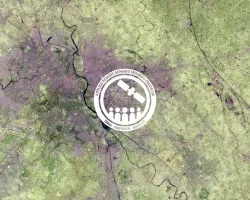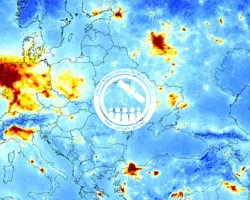Description
May 11, 13, 18, 20, 25, & 27
Fires are a growing concern, especially in regions with longer fire seasons, expanded wildland/urban interfaces, and severe and frequent droughts. Anthropogenic fires are commonly used to clear grassland and agricultural land prior to the planting season, and forests are often cleared using fires so the land can be repurposed for other uses. Whether naturally-occurring or anthropogenic, fires produce a significant change in the structure and reflectance of vegetation and soil properties and atmospheric chemistry. Remote sensing can be used to monitor pre-, during-, and post-fire conditions; including weather and climate conditions, fuel characterization, fire risk, smoke detection, monitoring, and forecasting, fire behavior, and the post-fire landscape. This 6-part, intermediate training will provide lectures and case studies focused on the use of Earth observations for operational fire monitoring: pre-, during-, and post-event.
By the end of this training attendees will understand:
- Terminology regarding type and components of fire (pre, during, post)
- Climatic and biophysical conditions pre-, during-, and post-fire
- The satellites and instruments used in conducting fire science
- The applications of passive and active remote sensing for fires
- How to visualize fire emissions and particulate matter
- The use of tools for active fires, emissions, and burned areas
- How to acquire data for conducting analysis in a given study area
This training is primarily intended for local, regional, state, federal, and international organizations involved in resource and ecosystem management, health and air quality, disaster risk management, disaster response, and those with an interest in applying remote sensing to fire science.
- Six 2-hour sessions
Materials:
Trainers: Amita Mehta, Ana Prados, Erika Podest, Robert Field, Sean McCartney
- Overview of fires, types of fires, and the three components (pre, during, post)
- Weather and climate conditions
- Temperature anomalies
- Soil moisture
- Case Study
- Fire danger rating
- Question & Answer Session
Materials:
Trainers: Amber McCullum, Juan Torres-Pérez, Zach Bengtsson
- Satellites and sensors for vegetation fire monitoring
- Overview of fire risk and fuels mapping
- Pre-fire landscape monitoring and pre-fire mapping tools
- Demonstration and case study
- Question & Answer Session
Materials:
Trainers: Pawan Gupta, Melanie Follette-Cook
- Overview of satellite observations of active fires
- Thermal anomalies via fire radiative power
- FIRMS, Worldview, LANCE, SEDAC
- Satellite observations of smoke
- Basics of smoke detection via satellite
- Passive & active remote sensing
- Polar vs. geostationary satellites
- Available sensors
- Available smoke datasets
- NOAA’s Smoke Detection Product
- Case Studies:
- How NASA is responding to the CA wildfires
- Global Applications
- Question & Answer Session
Materials:
Trainers: Melanie Follette-Cook, Pawan Gupta
- Satellite-based emissions datasets
- CONUS - Smoke and air quality forecasting
- Global - Smoke and air quality forecasting
- Case Studies
- Question & Answer Session
Materials:
Trainers: Amita Mehta, Erika Podest, Sean McCartney, Elijah Orland
- Precipitation and Runoff
- Terrain
- Soil Moisture
- Burned Area
- Landslides
- Case Study
- Question & Answer Session
Materials:
Trainers: Amber McCullum, Juan Torres-Pérez, Zach Bengtsson
- Review of the fire lifecycle dynamics
- Burned area and burn severity mapping
- Post-fire vegetation regrowth
- Demonstration and case study
- Question & Answer Session



